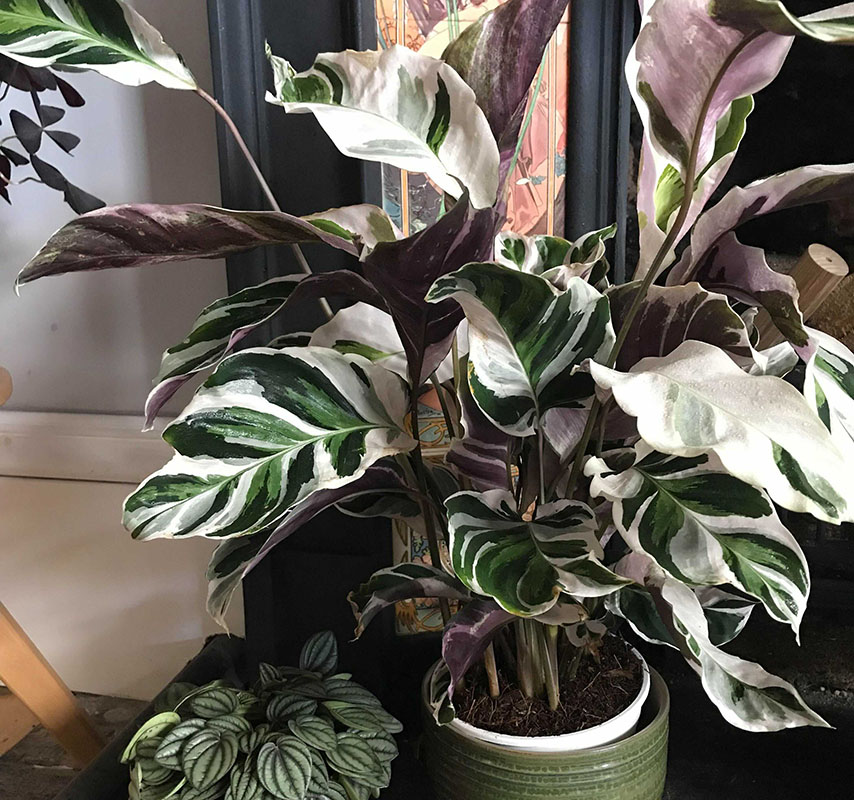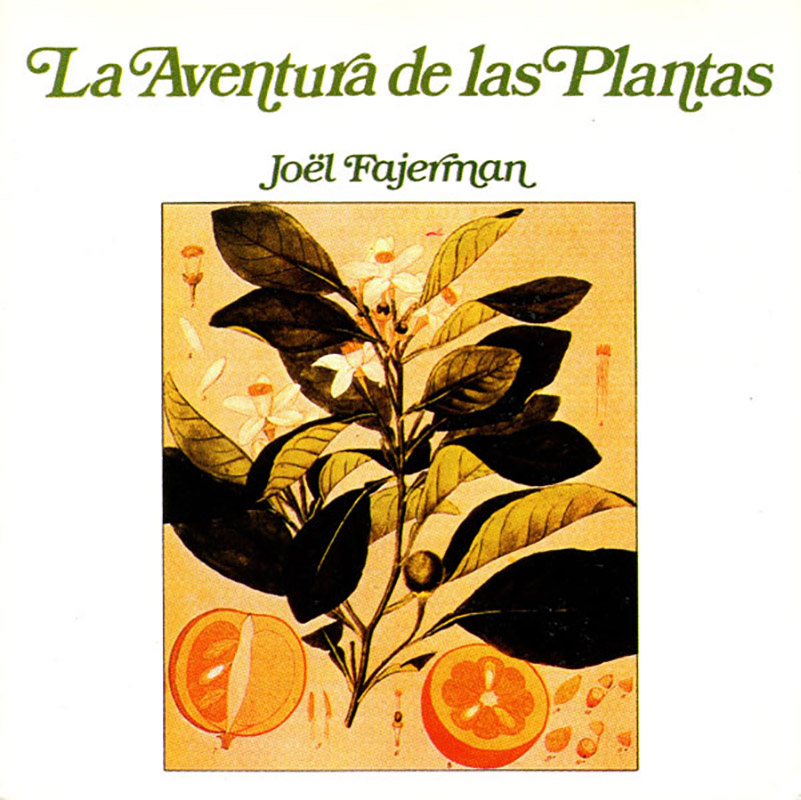Explore one of the most fascinating collections of dance music ephemera on view now at SF MOMA until August 18th. As vinyl collectors, we’re all well aware of […]
The Plants Behind Your Favorite Albums

Next up in our Art & Design: In Focus series, Tana Yonas takes a look into the plants behind your favorite album covers.
There is something endlessly fascinating about caring for a humble plant. Whether you’ve grown them from seed or picked one up that’s established and thriving, the magic of watching them grow and serenely move to catch the sun delivers sublime comfort. This sentiment is shared with many musicians. Innumerable tracks and records have been dedicated to the mostly peaceful plant kingdom (lest we forget the murderous venus flytrap and vacation-destroying poison oak).
What plants are on the cover of your favorite records? Below, we explore a few ISC favorites, identify the plants and illuminate their ways.

Mort Garson – Mother Earth’s Plantasia (1976)
We would be remiss if we didn’t open with perhaps the most famous record about plants, Mort Garson’s Mother Earth’s Plantasia. This one took a while to figure out, and was finally found on a Plantasia promotional poster illustrated by Marvin Rubin, the mastermind of the album art. It’s titled The Original 15 Hassle-Free Plants, and features a peacefully reclining character surrounded by a host of plants and their names. Many are uncommon, and one, the dieffenbachia, looks identical to the towering plant that almost envelops the two people on the album cover holding each other in sonic ecstasy. A little more research revealed this species of dieffenbachia’s exact name to be “Tropical Snow.” The common name comes from its appearance in the tropical forests it comes from, and it looks like its leaves are blanketed in snow.

“Tropical Snow” dieffenbachias are hearty plants native to the Central and South America’s tropics. Its huge variegated leaves can grow upwards of ten feet. Variegation is plant nerd speak for streaks different from the main color of a leaf, and this could be an irregular or regular pattern.
“Tropical Snow” only needs water once a week and is easy to take care of, so they’re almost an ideal beginner plant. They are sensitive to a draft, though that’s forgivable. One warning: This plant is not pet or child friendly. If the water that pools at the plant’s base is ingested, it can temporarily inhibit speech, hence the name. If that’s not a worry, the sublime feeling of setting one in your home next to your copy of Mother Earth’s Plantasia is highly recommended.

Green-House – Six Songs for Invisible Gardens (2020)
This recent release from Green-House is a contemplative dedication to photosynthetic friends. Olive Ardizoni performs and produces this work with the production and instrumental support of Michael Flanagan. Entrancing arpeggiations float between the conscious, liminal and subconscious space. Warm drones fill the room like sun rays. With song titles using names of unique varieties such as “Parlor Palm” and “Peperomia Seedling,” that this record would have a cover with a more esoteric plant isn’t surprising. For situations like this, you roll up your sleeves and look for an app to solve your problems. Yes, they exist, and after taking a digital sample from the cover, the app concluded it was a Lanceleaf Tickseed.

It’s easy enough to gather where this outdoor plant gets the first part of its name, with its lance-like leaf structure. Most are planted on borders and meadow margins, this extremely easy-to-own plant is native to the United States and is common in urban areas. It blossoms in summer and attracts both birds and bees so you really can’t lose with this one. It looks like a cheerful plant, and that’s the feeling you get when bathing in the musicality of this brilliant record.

Hiroshi Yoshimura – Green (1986)
Hiroshi Yoshimura’s Green is perhaps the most honest plant dedication on this list and stays true to the trend of solo plant loving composers and their synths. Every song on this record brings you close to a feeling of synesthesia with songs that are organic and full of life, offering a glimpse into what it might feel like to live the life of a plant. The first song “Creek” sounds like a plant in mid-day turning the sun’s nutrient dense wavelengths of white light into life giving chlorophyll while the second song “Feel” could be the musical representation of a plant feeling the first rays of sun in the morning.

Okay, now to explore the plant on the cover. This oddly shaped plant is just as curious looking in real life as it is on the cover of Green. This plant has two popular common names, the crab cactus and the Christmas cactus. It’s also the easiest plant on this list to take care of. It needs water once every two to three weeks, and staying true to most cacti, it generally needs only a little water. Keep watering regularly and you’ll get beautiful white blossoms in spring!

Stevie Wonder – Stevie Wonder’s Journey Through The Secret Life Of Plants (1979)
Stevie Wonder also got in on writing experimental odes to plants on his record Stevie Wonder’s Journey Through The Secret Life Of Plants. This 20-track record was a soundtrack to a film adapted from the widely popular book The Secret Life Of Plants by Peter Tompkins and Christopher Bird. The record is a beautiful oddity unlike anything Wonder has ever composed. To suit each mood, he sampled field recordings of birds, gently nuanced melodies, and adapted traditional instruments from across the world — and fused it with electronic synthesis to suit each mood. The album cover is a rather simple line drawing, though it obviously depicts the tropical hibiscus. After scrolling images once again, this time looking for two layers of petals like in the photo, there was one that closely resembled the drawing. After going through more pictures of familiar photos to find one with a species name, it was finally found, and its common name is Hibiscus China Belle.

China Belles are from Asia’s tropics and have brilliant vermillion-red petals. They thrive outdoor under direct sunlight, prefer humid regions and require short periods of dry soil — but holistically they need a lot of water. Its sibling hibiscus sabdariffa is delicious as Jamaica tea. It’s worth mentioning that there are some toxic varieties, so it might be risky if you have pets. If you get one, Stevie Wonder’s Journey Through The Secret Life Of Plants is the perfect record to play while you’re doing your weekly watering.

Roger Roger – De La Musique Et Des Secrets Pour Enchanter Vos Plantes (1978)
Even before technoliteracy was the norm, ideas traveled globally quickly. Roger Roger was well known in Europe for his BBC show and odd space-age compositions. Like Garson, he preferred to compose music alone. He was no doubt inspired by Plantasia, though Roger Roger’s approach is as sparse as Garon’s is lush. The album title translates to “Music and Secrets to Enchant Your Plants,” and was also an album created to soothe plants in the listener’s home. It is synthesized perfection and almost a digital lullaby; delightfully exciting trills contrast the willful exuberance of Plantasia.
Identifying this plant was more straightforward because the species on the cover is well known. Calathea plants are easy to spot: the stems are almost always similar, though the leaves can vary wildly. This is one of the funnest plants to own since most in this family have dynamic leaves that move all day. It looks like it’s dancing. After sifting through some photos, calathea “white fusion” exactly matched the illustration of the album cover, both the leaf color and irregular variegation .

Like most Calathea, the “Fusion White” does not like its soil to dry out. The top one inch of soil should stay moist, which equates to watering once a week. If you keep this guy in its garden pot, you can “bottom water” for 15 minutes a week to make it even happier. It gets up to two feet tall, and if you have a cat or dog you’ll be happy to hear it’s pet friendly.

Peter Tosh – Legalize It (1976)
Okay, yes, you probably know this indoor/outdoor plant, though it’s worth mentioning for it’s impact on music culture globally. Peter Tosh was a founding member of the Wailers with Bob Marley and Bunny Wailer, and left the group as they became famous to focus on his solo work. A Rastafarian, Tosh used ganja buds as a ritualistic tool to channel inspiration and, like many artists, to ease into a creative headspace. This infamous plant on the cover is called cannabis. We can assume that the field Tosh is in is a sativa varietal, since it’s taller than the other popular cannabis family, Indica.

Sativas come from Central and South America. The strain of cannabis is typically distinguished by its long, thin leaves, airy flower buds and tall stature. This plant is not pet or child friendly because of its famously psychoactive components. In the U.S., it’s been legal for personal use in Alaska since 1975 and has been recently decriminalized in many states, though it’s still very illegal on a federal level. It prefers to be outside, though many go through some extreme means to grow it indoors. It’s water-intensive and a cousin of another plant that’s prized for its aromatic flowering buds, the hops plant.

Joël Fajerman – La Aventura De Las Plantas (1982)
Another soundtrack, this time to a French documentary series. This record by Joël Fajerman is the perfect connector to Garson’s and Roger Rogers’ Albums. Fajerman is of the same mold, a lone composer creating landscapes of techno-naturalistic multitudes using a massive Moog modular synthesiser. La Aventura De Las Plantas starts with “Flowers of Love,” a dramatic and moody tribute to Mother Earth. It was used in the series’ first commercial, a cartoonish animation of a man in a barren, depressed landscape suddenly overwhelmed by the sudden growth of a giant plant. The series is partly animated, and offers beautiful live shots similar to what you would see on Planet Earth. The plant on the cover is pretty straightforward to identify: it’s a beautiful botanical drawing of the common orange.

The origins of oranges, along with most citrus, is the Malay Archipelago in Asia. The orange was popularly cultivated worldwide, most famously in Spain and on both sides of the United States’ southern coasts. One of the few plants that fruit in winter, they’re at their sweetest after a short freeze. Its blossoms imbue the air around it with the most delightfully sweet and captivating fragrance. A walk through a flowering orange orchard should be on every bucket list — and it would be taken to a whole new level if accompanied by this record.










